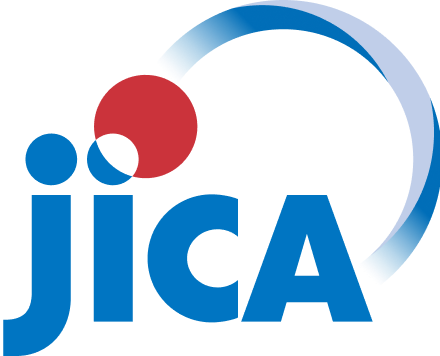HC EMISSION STABLE AND POWER OPTIMATION OF THE MOTORCYCLE LPG ENGINE BY HEAT TRANSFER TO THE INJECTOR
DOI:
https://doi.org/10.11113/aej.v13.18596Keywords:
HC stable, optimal power, bi – fuel, LPG injection, electronic heatingAbstract
This study was conducted on a motorcycle engine that already has bi-fuel, with liquid phase LPG injection. However, when conducting experiments on the concentration of substances in the exhaust gas, the results show that the concentration of hydrocarbon in the tests has different effects. It is possible to see a sudden high hydrocarbon concentration at some point in time. Over time, the nozzle tip will gradually form ice around the nozzle due to LPG evaporation and heat collection. When forming large lumps, this ice will break off and move into the combustion chamber. A part of ice has not yet mixed with the air to create an explosive mixture, and the combustion process is not completed. The solution proposed is to use the method of heat transfer to the nozzle body by an electronic heating device. The experiment measured brake power at the wheel, fuel consumption, and concentration of pollutants in the exhaust gas according to each controlled temperature to supply to the nozzle body. With this result, a suitable nozzle supply temperature is selected to ensure that the engine achieves the most optimal power and fuel consumption and eliminates the phenomenon of abnormal hydrocarbon concentration. From the test results, 30OC is the most suitable temperature when adjusting the heating device around the nozzle.
References
Thanh, T. N., and D. N. Phu. 2022. Improving performance and reducing emissions from a gasoline and LPG bi-fuel system based on a motorcycle engine fuel injection system. Energy for Sustainable Development. 67: 93–101. DOI: 10.1016/j.esd.2022.01.010
Nguyen, T. T., and P. D. Nguyen. 2022. A Study of CNG Fuel System Uses Mixer for Engine of the Suzuki Viva Motorcycle. International Journal of Mechanical Engineering and Robotics Research. 11: 37-42. DOI: 10.18178/ijmerr.11.1.37-42.
Phu, D. N., T. N. Thanh, and R. Procházka. 2021. Performance Parameters Reevaluate and Predict the Fuel Consumption of Cummin Engine Running on CNG-Diesel Dual Fuel by GT-Power Software. International Conference on System Science and Engineering (ICSSE). DOI: 10.1109/ICSSE52999.2021.9538450
Dong, N. P., and N. T. Tuan. 2019. Research, development and operation of gas engines in Viet Nam. International Scientific Conference of Czech and Slovak Universities and Institutions Dealing with Motor Vehicles and Internal Combustion Engines Research., Lednice Brono, 11-13 September, 2019.
Nguyen, T.T. 2020. Movement and vaporization of the single liquefied petroleum gas droplet into the intake manifold. International Journal of Advanced Research in Engineering and Technology. 6 (11): 714–719. DOI: 10.34218/IJARET.11.6.2020.064.
Thanh, T. N. 2010. Compressed natural gas (CNG) as an alternative fuel for internal combustion engine, problems and propose technical solutions for growth CNG vehicles in Vietnam. XLI International Scientific Conference of Czech and Slovak University Departments and Institutions Dealing With the Research of Combustion Engines., Liberec, Czech Republic.
Nik Aziz, N. N. F. A, et al, 2020. Combustion study of waste cooking oil biodiesel in an oil burner. Jurnal Teknologi. 82(4): 81-89.
Bin, M. Z. M. S, et al., 2019. Performance characteristics of a small engine fueled by liquefied petroleum gas. Advanced Structured Materials. 102: 207–14. DOI: 10.1007/978-3-030-05621-6_18.
Erkus, B., A. Sürmen., and M. I. Karamangil. 2013. A comparative study of carburation and injection fuel supply methods in an LPG-fuelled SI engine. Fuel. 107: 511–7. DOI: 10.1016/j.fuel.2012.12.061.
Szpica, D., and J. Czaban. 2014. Operational assessment of selected gasoline and LPG vapour injector dosage regularity. Mechanika. 20(5): 480–488. DOI: 10.5755/j01.mech.20.5.7780.
Raslavičius, L. et al., 2014. Liquefied petroleum gas (LPG) as a medium-term option in the transition to sustainable fuels and transport," Renewable and Sustainable Energy Reviews. 32: 513–25. DOI: 10.1016/j.rser.2014.01.052.
Nguyen, T. T. 2011. Emission concentration of spark ignition engine using liquefied petroleum gas, before and after three - way catalyst converter. 5th Annual International Travelling Conference. Tatranská Kotlina – High Tatras. 13 – 16 April.
Abdullah, N. R., Ismail, H., Michael, Z., Ab. Rahim, A, and H, Sharudin, H. 2015. Effects of air intake temperature on fuel consumption and exhaust emissions of natural aspirated gasoline engine. Jurnal Teknologi. 76(9): 25-29.. DOI: 10.11113/jt.v76.5639
Beroun, S et al., 2013. Computational modeling of the liquid LPG injection into the suction manifold of an SI vehicle engine. Applied Mechanics and Materials 390: 355–359. DOI: 10.4028/www.scientific.net/AMM.390.355.
Tuan, N. T., and N. P. Dong. 2020. Design and Installation of CNG Fuel System use Mixer for the Motorcycle SI Engine. The Second International Conference on Material, Machines, and Methods for Sustainable Development., Nha Trang, Vietnam.
Kim, Y. J. K et al., 2019. Experimental study on liquid phase lpg spray and icing phenomenon for a middle class diesel engine application. At Sprays. 21(7): 611–624. DOI: 10.1615/AtomizSpr.2012004106.
Jaafar, M. N. M., and S. Safiullah. 2018. Combustion characteristics of rice bran oil biodiesel in an oil burner. Jurnal Teknologi. 80(3): 185-192.
Nguyen, P. D, et al., 2020. Combustion of Natural Gas in Engines for Heavy-Duty Vehicles. 51th International Scientific Conference of Czech and Slovak University Departments and Institutions Dealing with the Research of Internal Combustion Engines. 52-58.
Setiyo, M., Waluyo, B., Husni, M., and Karmiadji, D. W. 2016. Characteristics of 1500 cc LPG fueled engine at various of mixer venturi area applied on tesla a-100 LPG vaporizer. Jurnal Teknologi. 70(10): 43-49. DOI: 10.11113/jt.v78.7661.
Mareš, J et al., 2019. Automotive SI engine with injection of the liquid LPG into the inlet manifold. International Scientific Conference of Czech and Slovak Universities and Institutions Dealing with Motor Vehicles and Internal Combustion Engines Research. Lednice Brono.
Park, C et al., 2007. Characteristics of droplet and icing formation of an injector for liquid phase LPG injection system. SAE Technical Paper.. 23 Jul, 2007.DOI: 10.4271/2007-01-2050.
Kim, T. Y et al., 2014. Effects of shape and surface roughness on icing and condensation characteristics of an injector in a liquid phase LPG injection system. Fuel. 15(132): 82–92.DOI: 10.1016/j.fuel.2014.04.010.
Tuan, N. T., and N. P. Dong. 2021. Theoretical and experimental study of an injector of LPG liquid phase injection system," Energy for Sustainable Development. 63: 103–12. DOI: 10.1016/j.esd.2021.07.006.
Mitukiewicz, G., Dychto, R., and Leyko, J. 2015. Relationship between LPG fuel and gasoline injection duration for gasoline direct injection engines. Fuel, 153: 526–534. DOI: 10.1016/j.fuel.2015.03.033
Wi, H. S., Yi, J. P., Lee, J. H., and Park, J. I. 2019. An investigation of icing in a liquid petroleum gas liquid phase fuel injector with a shut-off valve. Proc. Imeche, 226 part D. Journal Automobile Engineering. 22: 231-239. DOI: 10.1177/0954407011421590.







